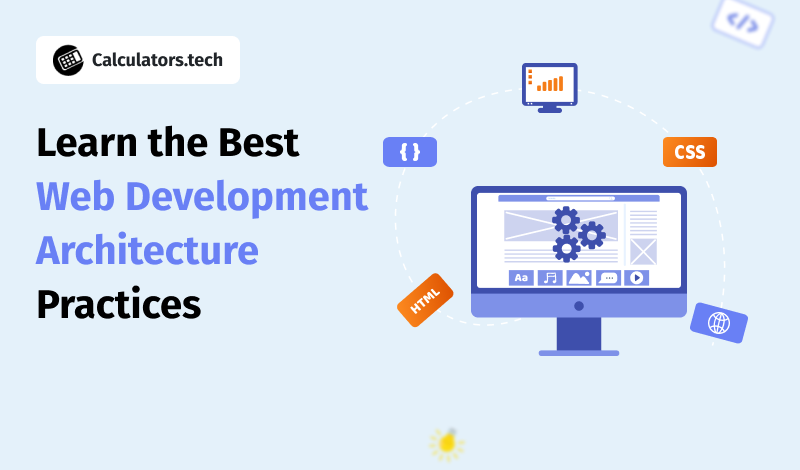Building modern web applications is like constructing a high-rise building – you need a solid foundation and carefully planned architecture to ensure long-term success.
Today, where applications need to handle everything from supply chain automation to simple user interactions, having the right architectural approach is more crucial than ever.
Start with a Strong Foundation
The key to successful web development architecture isn't just about choosing the latest trendy framework or technology stack. It's about making informed decisions that align with your project's specific needs and future scalability requirements.
The Monolith vs. Microservices Debate
One of the first architectural decisions you'll face is choosing between a monolithic or microservices approach. While microservices are often praised as the modern solution, they're not always the best choice. A well-structured monolith can be more appropriate for smaller teams or projects where simplicity is paramount.
Consider a telecommunications company that needed to identify phone line type for their customer service portal. Initially, they jumped on the microservices bandwagon, creating separate services for each function. However, this led to unnecessary complexity and communication overhead. They later refactored to a modular monolith, which better suited their team size and requirements while maintaining clean separation of concerns.
Key Architectural Principles
1. Separation of Concerns
Keep your code organized by separating different functionalities into distinct layers:
- Presentation Layer: Handle user interface and user experience
- Business Logic Layer: Implement core business rules and workflows
- Data Access Layer: Manage data persistence and retrieval
2. Scalability First
Design your architecture with scalability in mind from day one. This doesn't mean over-engineering, but rather making choices that won't paint you into a corner later.
If you are building an online PDF processing service, you might start with a simple server setup, but ensure your architecture can easily accommodate load balancers and multiple servers when needed.
3. Security by Design
Security shouldn't be an afterthought. Implement security measures at every layer:
- Use proper authentication and authorization
- Implement input validation
- Encrypt sensitive data
- Regular security audits
- Follow OWASP guidelines
Modern Architectural Patterns
The JAMstack Approach
JAMstack (JavaScript, APIs, and Markup) has gained popularity for good reasons. It offers:
- Better performance through pre-rendering
- Enhanced security with fewer server-side processes
- Easier scaling
- Better developer experience
Event-Driven Architecture
For complex applications, event-driven architecture can provide:
- Better decoupling between components
- Improved scalability
- Real-time processing capabilities
- Better fault isolation
Utilize Progressive Web App (PWA) Technologies
Progressive Web Apps bridge the gap between web and native applications, offering the best of both worlds. By implementing PWA technologies, you can provide users with an app-like experience directly through their web browsers.
Here’s an example. A document/presentation management system — Gamma app could leverage PWA features to allow users to edit and view documents, sync changes when online, and provide a seamless experience across devices.
Embrace Serverless Architecture Where Appropriate
Serverless computing is gaining traction for good reason. It allows developers to focus on writing code without worrying about the underlying infrastructure. This model can be particularly beneficial for applications with variable workloads or for specific functionalities within a larger application.
In a supply chain automation system, you could use serverless functions to handle event-driven processes like inventory updates or order processing. This approach ensures that you only pay for the compute resources you actually use, potentially reducing costs and improving scalability.
Best Practices for Implementation
- Start Small, Think Big Don't over-architect initially, but design with future growth in mind. Your architecture should be flexible enough to evolve with your needs.
- Documentation is Critical Maintain clear documentation of your architectural decisions and patterns. This helps new team members understand the system and makes future maintenance easier.
- Monitoring and Observability Implement comprehensive monitoring from the start. You can't improve what you can't measure.
- Automated Testing Build a robust testing strategy that covers unit tests, integration tests, and end-to-end tests.
Looking Forward
The web development landscape is constantly evolving, and so should your architecture. Stay informed about new patterns and technologies, but don't chase every new trend. Focus on architectural decisions that provide real value to your specific use case.
Remember that the best architecture is one that serves your project's needs while being maintainable and scalable. It should enable your team to work efficiently and adapt to changing requirements without causing technical debt to spiral out of control.
By following these principles and practices, you'll be well-equipped to build robust, scalable web applications that can stand the test of time and grow with your business needs.
